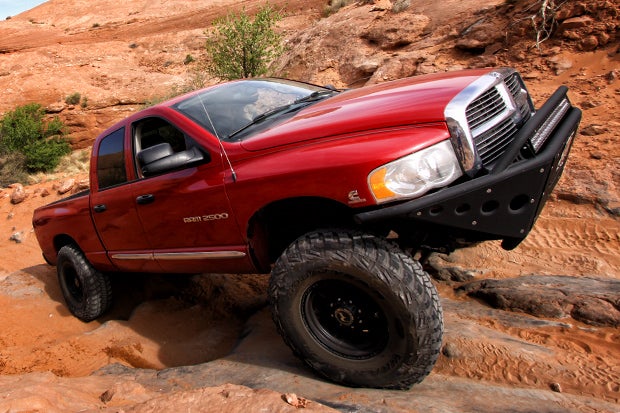
Have a truck or SUV question for the 4x4 AnswerMan? Send your questions to editor@off-road.com. Please include your name and location, and be as detailed as possible about your questions.
Previous 4x4 AnswerMan Columns
February 2017 - Are Diesels Dirty?
December 2016 - Overland Travel and Off-Road Storage
November 2016 - Truck Tire Tips & More
September 2016 - Daytime Running Lights, Diesel Half-Tons
FLAT TIRE REPAIR
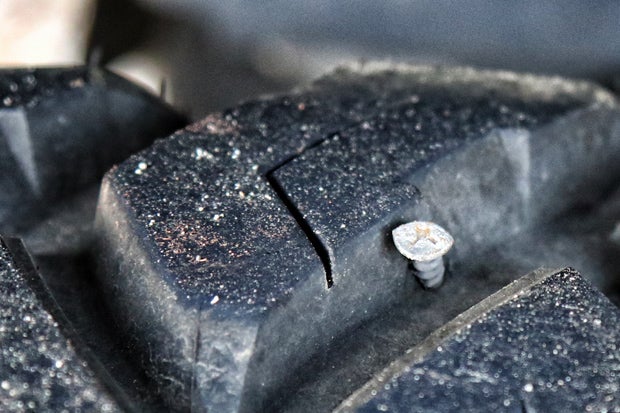
If you like going off-road, itís important to know how to change a tire and also perform a flat tire repair. Most tow trucks and AAA service will not go off the pavement to help, so youíre better off learning how to take care of it yourself. In most cases all you really need is a good spare tire, car jack and tire wrench to get the job done. It also doesnít hurt to carry a tire repair kit just in case you need to perform an emergency repair in order to keep moving.
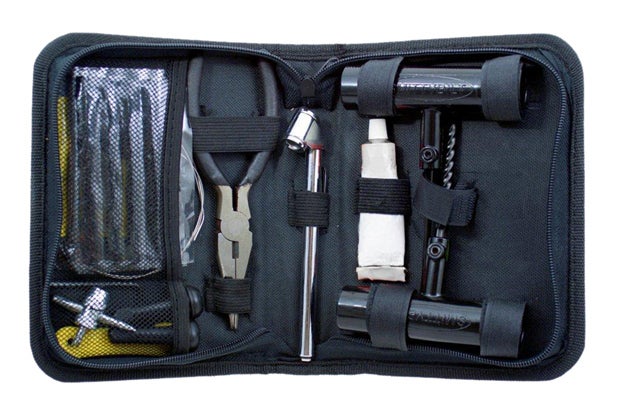
When you get a flat tire off-road you can go one of two ways: repair or replace. If the puncture is small, you can try to repair it using a tire plug kit, but keep in mind that this is only a temporary fix to help you get back home. Once you get back to civilization, you need to have a proper patch repair done at a tire. According to the Rubber Manufacturer's Association, a proper tire repair is done from the inside of the tire using a patch and plug. This requires the removal of the tire from the wheel.
If the puncture is rather large or the sidewall is slashed, youíre better off replacing it with the spare tire, preferably a full size tire so it matches the height of the other tires on the vehicle.
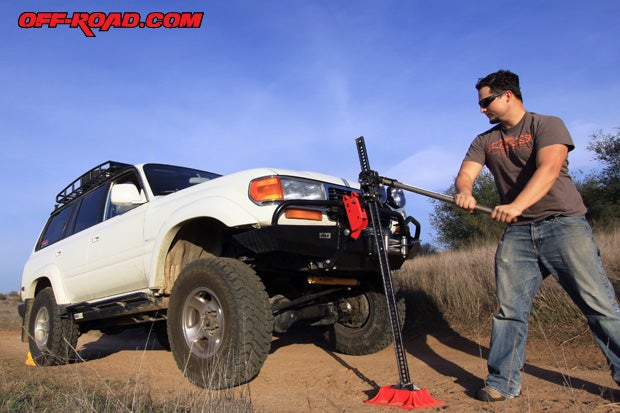
If youíve never changed a tire, itís time to learn. A good reference guide to use is your Vehicle Ownerís Manual. It will help you locate the spare tire and car jack. It should also give you step-by-step instructions on how to change a tire on your vehicle (itíll offer jack placement suggestions as well). You can also call on a friend that has done it before so you can practice at home. It may seem silly to change a perfectly good tire in your space time, but you really donít want to learn how change your first tire in the middle of the desert on a scorching hot day. After youíve done it once, youíll be golden.
--
4X4 VAN CONVERSION
Hello Off-Road.com,
We have a nice 1994 Dodge B-350 (single wheel rear) Camper Van very similar to a Roadtrek. It has a New 5.9L and automatic transmission. But needing it to be a 4x4 because everywhere we go is too bad for the 2x4 van. So. My question is, what will I need to convert it into a 4x4? I don't mind using parts from different make, but hoping to buy one donor truck and swap everything if it's possible. I plan on doing all the work myself. Built several trucks over the years. And would like to keep my new Transmission if possible. Looking for the most SIMPLE, Fast and Cheapest way possible.
Thx for any help.
Dan
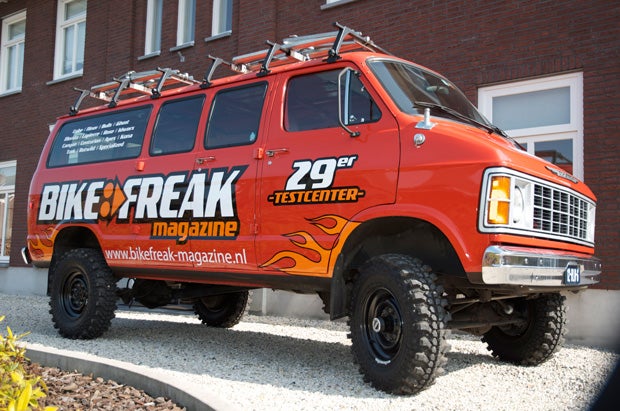
Hi Dan, this sounds like an exciting project. If youíre running a factory setup, your van should have one of the following 1-ton rear axles: Chrysler 9.25", Dana 60, or Dana 70. The Dana 60 axle seems to be the most popular axle used by 4x4 van conversion companies. Theyíre strong and have plenty of aftermarket support for gear and axles.
In the front, most 4x4 van conversion companies use either a Dana 44 or Dana 60 full-width axle. To keep things simple and economical, you may want to look for a 4x4 Ram donor truck of the same vintage. This will allow you to pull any necessary parts for your van conversion, including suspension, drive lines and transfer case.
Since you may want to keep your NEW 2WD automatic transmission, you may be able to run a divorced transfer case behind it. If it become too much of a headache, a 4x4 transmission and transfer case to matches up to your 5.9L V8 gas engine might be a better solution.
These are just some of the basic parts you will need. There is still a lot of custom fabrication ahead to put it all together and make it work. You can source many of the specialty parts needed for the conversion at Pathfinder Vans, LLC. You can check them out here.
If you find this project to be a little over your head, Iíd also talk to a 4x4 conversion company like Quigley to find out what they recommend. They may have some spare parts laying around to help you on your project or can refer you to someone that can help you finish the job.
Please send us an update once you get rolling on it.
Cheers!
--
AIR UP, AIR DOWN
4x4 AnswerMan, I noticed some people take air out of the tires off-road. Is this really necessary?
Benny
Sparks, NV
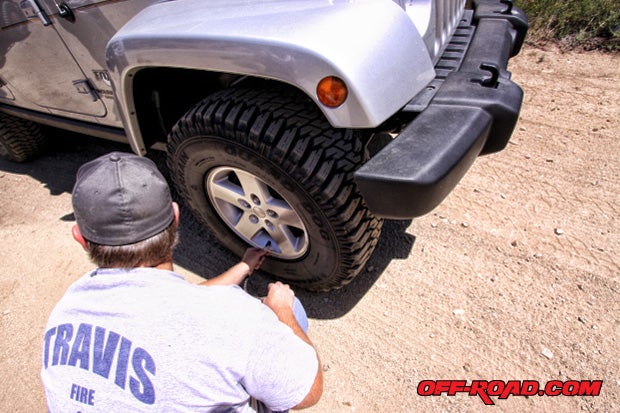
Hi Benny, it really depends on the type of terrain youíre tackling. If it's a maintained dirt road, I donít even bother airing down. Now if youíre navigating a bumpy trail or rocky terrain, airing down your tires will help give the vehicle a softer ride and more traction. If youíre going into soft sand or mud, you definitely want to air down to get a wider footprint. Just play with the tire air pressure and find what works best for you. Just donít go any lower than 15 psi (unless youíre running beadlock wheels), because the tire can actually come off the wheel entirely and then youíll be in a serious bind.
When youíre done off-road, make sure to air back up before going back on the highway so you donít damage your tire.
Good luck.
--
ALTERNATOR POWER
Hey 4x4 AnswerMan, I noticed that after I added off-road lights and the winch my headlights started fading in and out sometimes. Is it a bad battery or alternator? Itís getting kinda annoying.
John
Menifee, CA
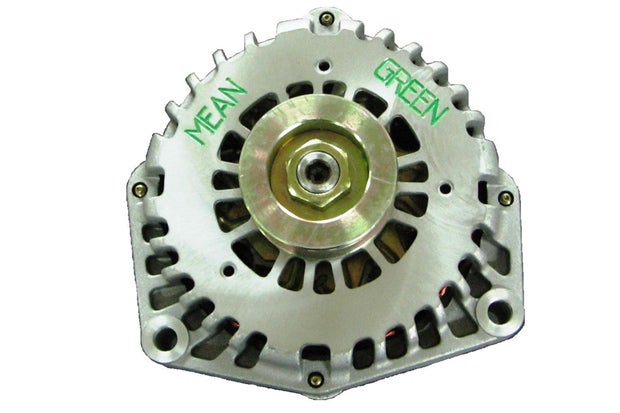
Hi John, sounds like your electrical system is starving for power. The loss in power can be coming from either the battery or a struggling alternator. You probably notice it more at low idle or when the system is under load (like when youíre winching).
Most electrical systems are only designed to support the factory instruments. Once we start adding accessories like off-road lights, recovery winches, radios and such, weíre putting a lot more demand on the battery and alternator. Sometimes they simply canít keep up.
You can bench test the alternator to see if it is producing adequate power or if it has gone bad. Most auto parts stores can test it if you remove it from the truck. The life of an alternator is typically 80-100K miles (but can be less if it is exposed to excessive dirt and mud).
If youíre adding numerous electric accessories to your truck, what you really need to consider is upgrading your battery to one with more power--like an Optima or Odyssey. This alone will help.
Related story: Odyssey Dual-Battery Install
You can also upgrade the alternator so it produces more power and keeps up with the charge. There are aftermarket companies like Mean Green that make high-amp alternators that deliver up to 300% more charging power than a stock alternator.
Have a truck or SUV question for the 4x4 AnswerMan? Send your questions to editor@off-road.com. Please include your name and location, and be as detailed as possible about your questions.
ďLikeĒ us on Social Media for the latest off-road news and developments.
Instagram
Facebook
Google+
Twitter


 Your Privacy Choices
Your Privacy Choices